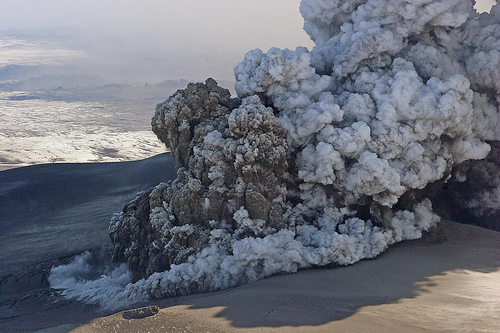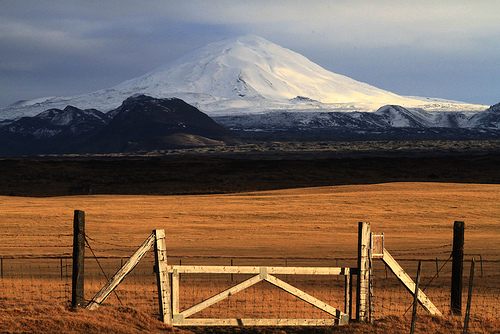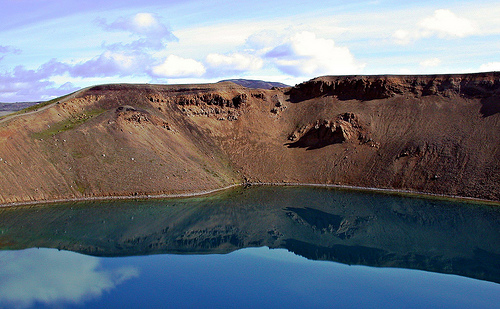Exploring the Volcanoes of Iceland
Because of Iceland’s geographical and geological position, its terrain has a very high volume and concentration of active volcanoes. This is because this small island country is located on top of a hotspot, on the Mid-Atlantic Ridge.
There are a total of 130 volcanoes in Iceland, and 18 of these are known to have erupted since Iceland was settled in 874 AD. In the past 500 years, one third of the total lava output on earth has come out of Iceland. These volcanoes are very interesting because people thought they had to do with Hell in the past, but they are now used for astronomical research.

Eyjafjallajökull
Eyjafjallajökull is located in southern Iceland. It erupts fairly frequently, the last time being in 2010, causing massive confusion with European air traffic. It is part of a greater chain of volcanoes that stretch across Iceland. The volcano is covered by an ice cap of approximately 100 square kilometers (39 square miles). It is fed by a magma chamber located underneath.

Grímsvötn
The Grímsvötn lakes lie above the magma chamber of a volcano. The greater space around these lakes is a volcanic caldera that last erupted in 2004. This particular eruption lasted about a week and some of the ash that came out landed in mainland Europe. This caldera is located in the highlands of Iceland, by the side of a glacier in south-central region of the country. Scientists have found bacteria living in these lakes, which was the first sub-glacial lake-dwelling bacteria that has been located on earth. They are hoping this will provide materials for further research into life on Mars.

Hekla
Hekla is located in southern Iceland, and is an active fissure stratovolcano with an elevation of 1,488 meters (4,882 feet). It is the most active volcano in the country, with 20 known eruptions since 874 A.D. This volcano was nicknamed the “Gateway to Hell” in the Middle Ages. It has produced one of the largest volumes of lava in the world, and its last eruption occured in 2000.

Krafla
Krafla is a caldera located in northern Iceland, standing at 650 meters (2,133 feet). There have been 28 recorded eruptions in history, the last one being in 1984. It contains a well-known Viti crater (meaning “Hell crater”), as well as a geothermal area that has boiling mudpools.

Askja
Askja is a stratovolcano that is situated far off in the central highlands of Iceland. It is a complex of calderas that are within the mountains, only accessible by humans a few months out of the year. Because of its unique terrain, this region was used during the Apollo program to train astronauts for going to the moon. It also contains a Viti crater, with opaque blue water that is full of minerals. This Viti lake formed after an eruption in 1875; Askja last erupted in 1961.
